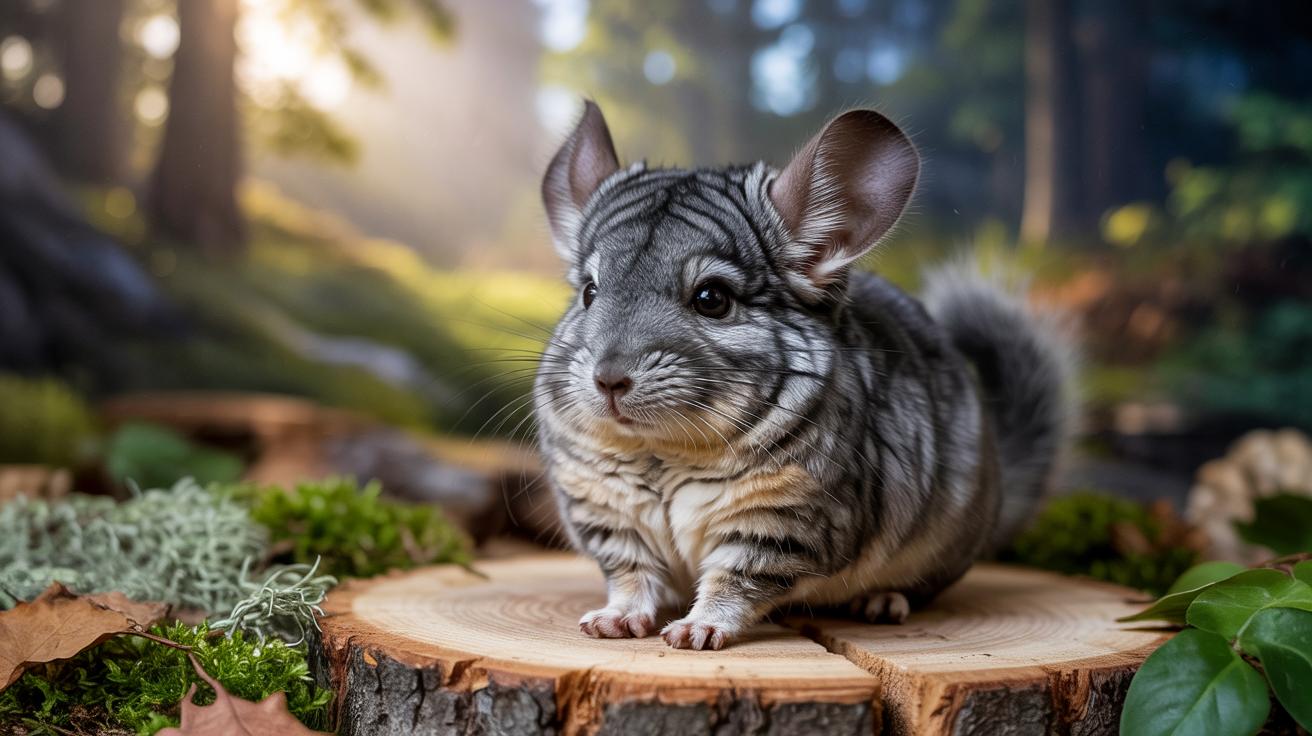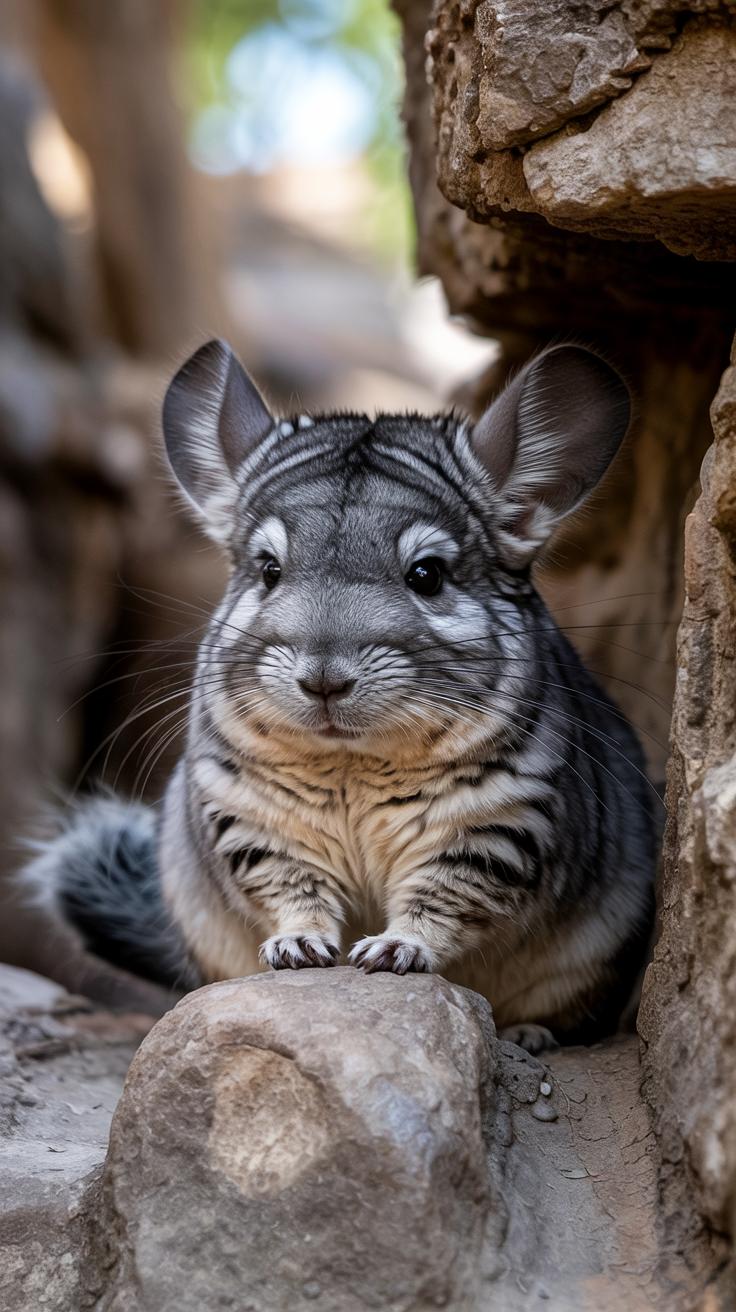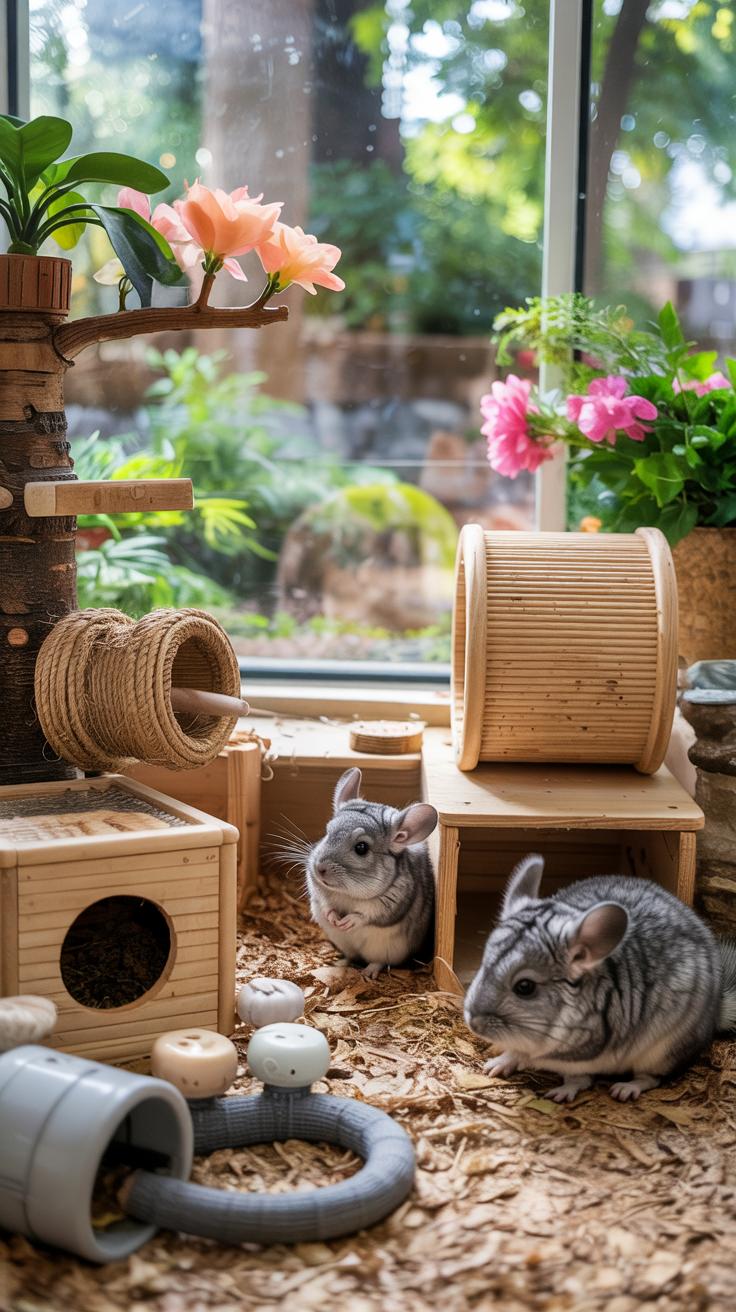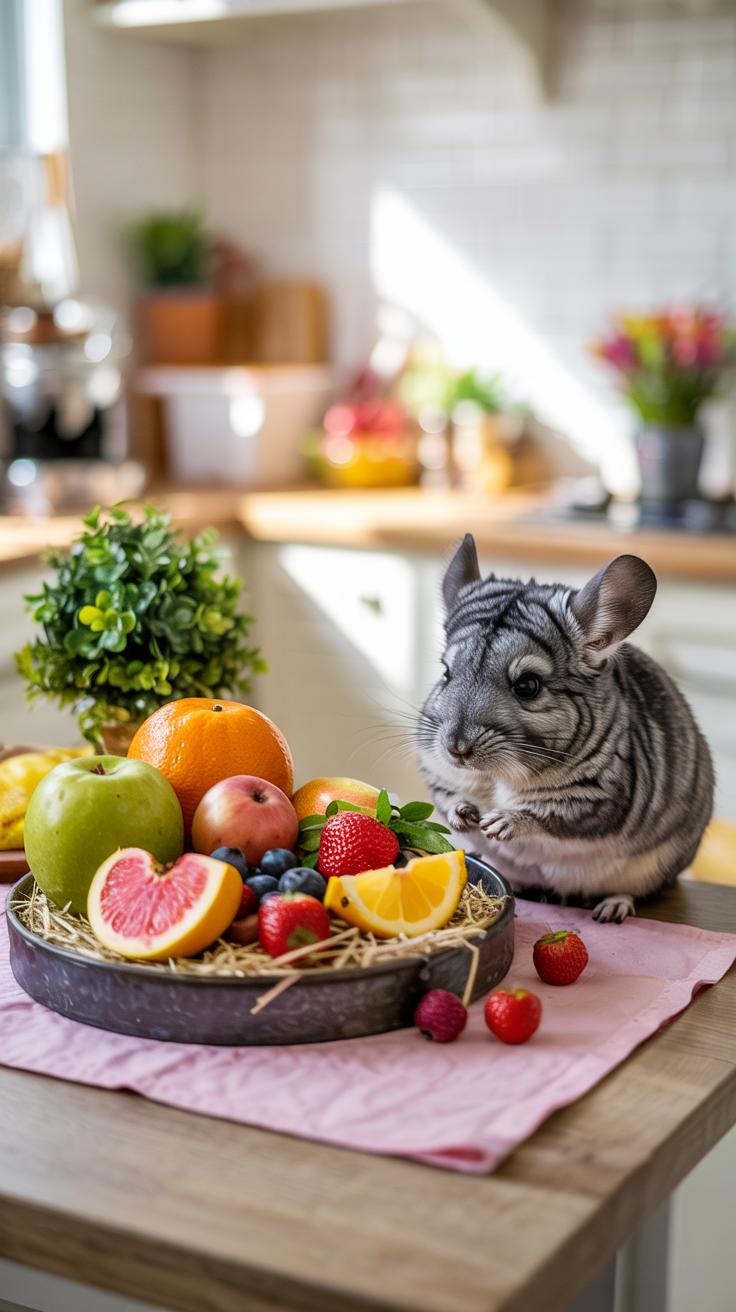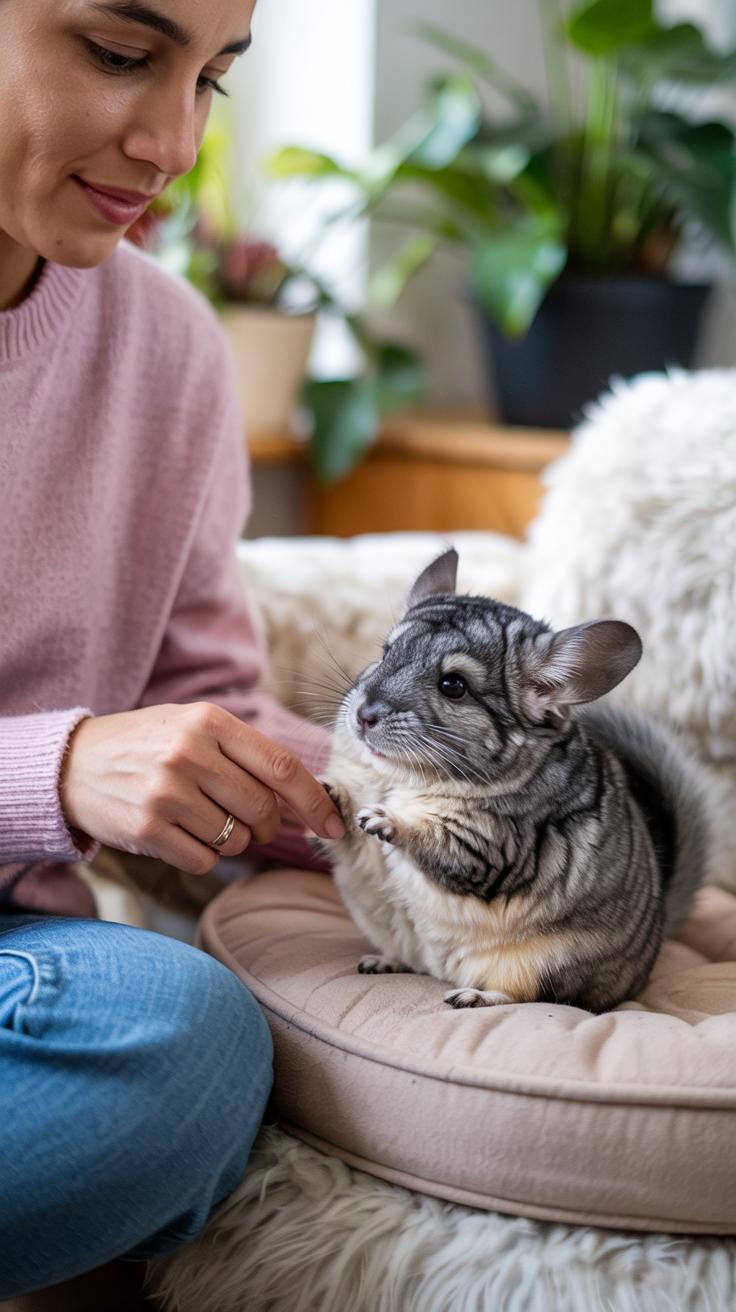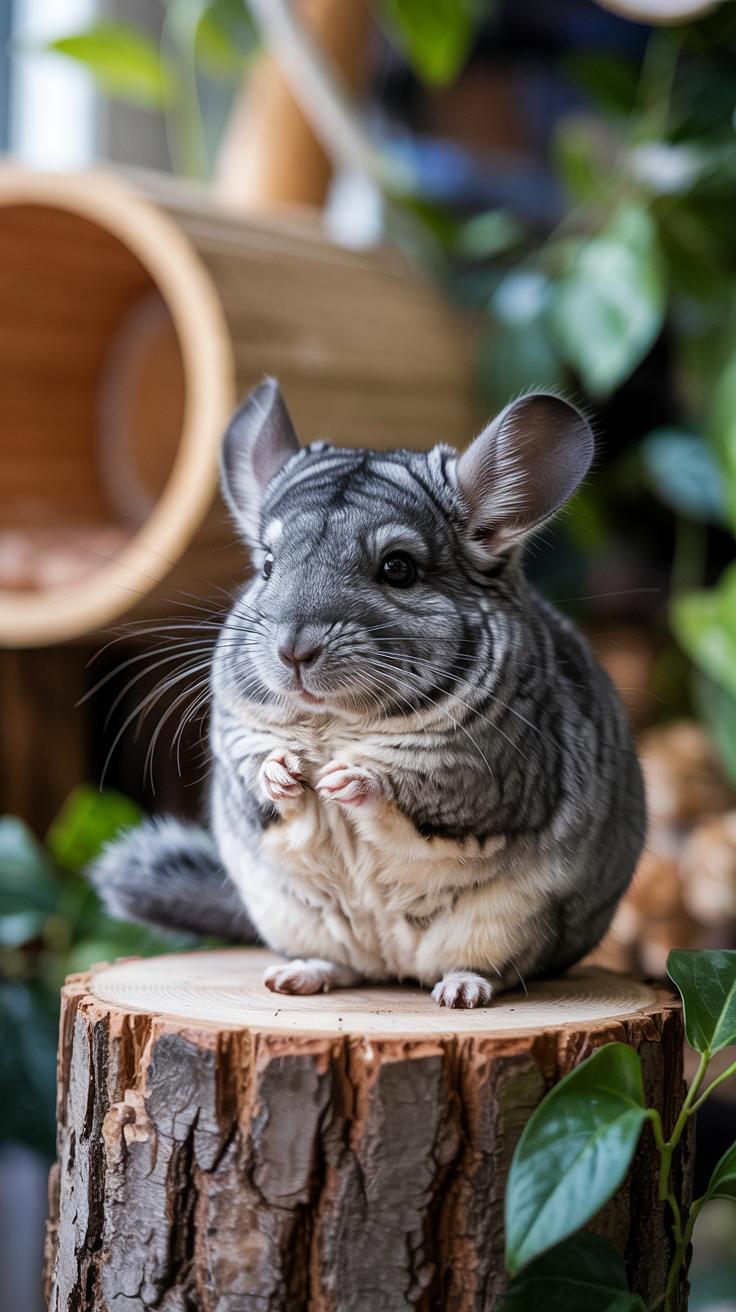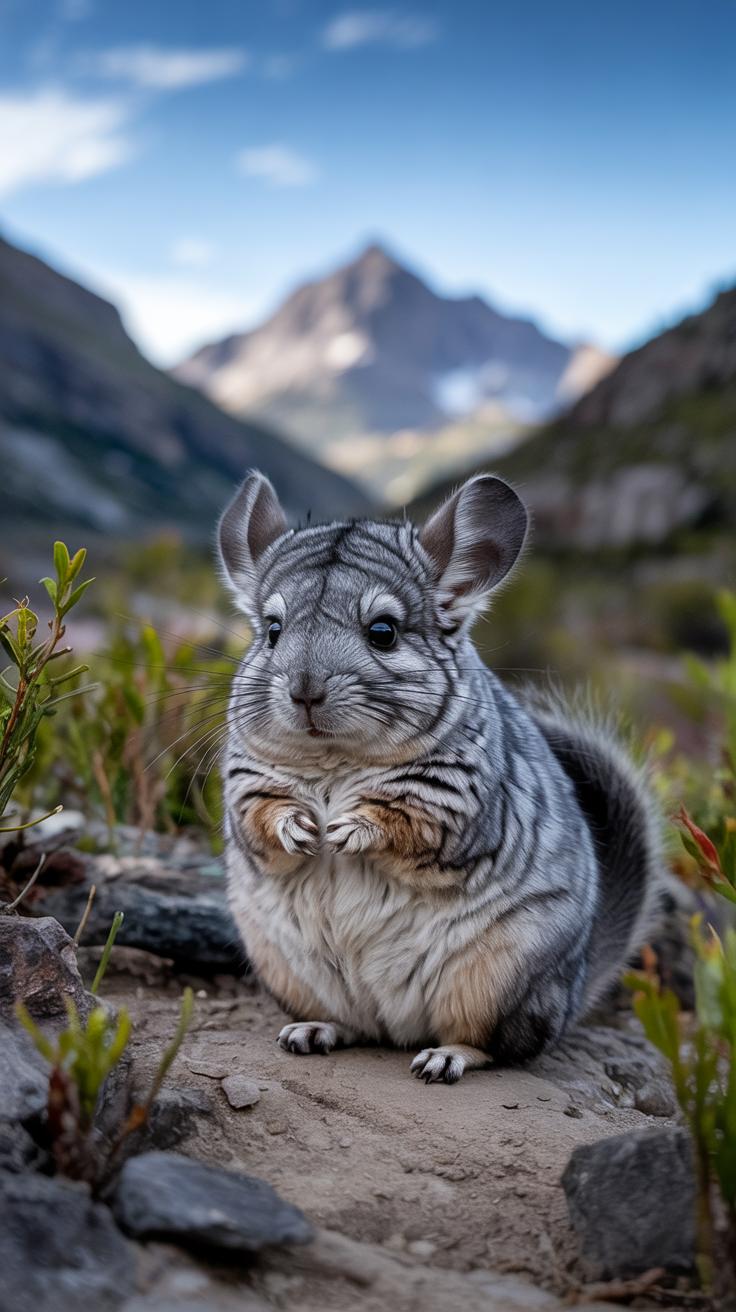Introduction
Chinchillas, known for their extraordinarily dense and soft fur, are small rodents primarily found in the Andes mountains of South America. Their charming demeanor, combined with their playful and social behavior, has made them popular among pet enthusiasts. The two main species of chinchillas are the short-tailed chinchilla and the long-tailed chinchilla, both of which have unique attributes that contribute to their appeal as pets. Understanding their natural habitat, social structures, and specific care needs is crucial for any potential chinchilla owner.
Domestic chinchillas descended from Chinchilla lanigera have become increasingly popular as household pets, often regarded as pocket pets due to their manageable size. However, owning a chinchilla comes with responsibilities and a deep commitment to providing an enriching environment that mimics their natural habitat. This article will explore the allure of chinchillas and offer insightful guidance on how to care for them, ensuring a happy and healthy life for these delightful creatures.
The Fascinating World of Chinchillas History Habitat and Behavior
The history of chinchillas is rich and varied, tracing back to their native habitats in the Andes mountains of South America. These small rodents thrive in high-altitude environments, known for their dense fur which serves as insulation against the cold. Chinchillas were once hunted extensively for their soft pelts, leading to their near extinction in the wild. Conservation efforts have allowed for a sustainable population, significantly impacting their presence in the pet industry.
As pets, chinchillas are appreciated not just for their beauty, but also for their playful and inquisitive natures. Their nocturnal behavior makes them active during the evening, often becoming lively playmates for their owners at night. Understanding their habitat needs—preferably a spacious cage with ample enrichment—is essential to nurture their well-being. This combination of charm and care attracts enthusiasts who are eager to provide suitable environments for these fascinating creatures.
Chinchilla Charm and Care for Enthusiasts
The allure of chinchillas lies in their unique traits, from their soft and luxurious fur to their sociable demeanor. Owners often become captivated by their endearing antics and complex personalities. However, responsible ownership demands an understanding of their dietary requirements, exercise needs, and the significance of maintaining their living environment. Regular dust baths are essential to keep their fur in optimal condition, while a diet rich in hay and specific pellets is vital for their digestive health. This dedication to care fosters a strong bond between chinchillas and their human companions, enhancing the enjoyment of having these delightful pets.
Species Information and Differences Understanding the Two Main Species of Chinchillas
Identifying the Two Primary Species
Chinchillas are mostly categorized into two main species: the short-tailed chinchilla and the long-tailed chinchilla. The short-tailed kind, known as Chinchilla chinchilla, typically displays a rounder body and a tufted tail, making it quite compact. In contrast, the long-tailed chinchilla, or Chinchilla lanigera, presents a slender body with a longer tail. These physical differences significantly impact their care and habitat requirements, as each species has unique behavioral traits that dictate their living conditions.
Impact on Care and Enthusiast Recommendations
The short-tailed chinchilla tends to be more sociable and actively seeks interaction, often benefiting from companionship, whereas the long-tailed variety may show a reserved disposition, requiring more alone time. When caring for these beloved pets, it is vital to accommodate their distinct personalities and social needs, ensuring each species thrives in its environment. Tailoring care practices, such as socialization efforts and habitat design, is essential for both types of chinchillas to flourish as cherished members of the family.
Creating an Ideal Habitat Setting Up a Comfortable Living Space for Chinchillas
Key Elements of Habitat Design
The environment in which chinchillas reside is pivotal to their well-being. Providing a spacious cage with multiple levels is essential, as chinchillas love to climb and explore. A minimum cage size of 24” x 24” x 36” is recommended, with ample room for movement and play. Using materials such as untreated wood or metal for the cage helps maintain safety and durability. Liners made of safe bedding, like aspen shavings or paper-based products, ensure hygiene while allowing for easy cleaning.
Creating a Safe and Stimulating Environment
Incorporating various enrichment items can enhance the chinchilla’s quality of life. Safe chew toys, wooden shelves, and tunnels should be added to encourage natural behaviors. Regularly placing hay and treats in hidden locations will stimulate their instincts. It’s also vital to maintain a temperature between 60°F and 70°F, ensuring that their habitat is well-ventilated yet free from direct sunlight. Overall, investing time and effort in the right habitat setup promotes a joyful and healthy life for your chinchilla.
Nutrition and Feeding Practices for Chinchillas Understanding Their Dietary Needs
Essential Dietary Requirements
Chinchillas have specific dietary needs that are vital for their health and well-being. A high-fiber, low-fat diet is the cornerstone of their nutrition. The primary component should be good-quality hay, such as timothy or orchard grass, which promotes healthy digestion. Pellets specially formulated for chinchillas can be offered in moderation, ensuring they contain minimal grains and no artificial additives.
Foods to Avoid
Providing the right diet is crucial, and certain foods must be strictly avoided. Fresh fruits and vegetables can be too high in sugar and moisture, potentially leading to digestive issues. Treats like nuts or seeds are also discouraged, as they are high in fat. Always ensure fresh water is available, and monitor their eating habits to catch any issues early on.
Health and Veterinary Care Understanding the Healthcare Needs of Chinchillas
Common Health Issues in Chinchillas
Chinchillas are generally resilient pets, yet they can experience specific health concerns that require attention. Dental issues are prevalent, as their constantly growing teeth may lead to overgrowth or misalignment. Regular monitoring of their teeth and providing appropriate chew toys can help manage dental health. Additionally, gastrointestinal problems can occur, often caused by dietary imbalances. Signs of discomfort, such as changes in stool, should prompt immediate veterinary consultation. Skin issues, including fur mites and fungal infections, can also arise, necessitating thorough inspections and timely treatment.
Veterinary Care for Chinchillas
Routine veterinary visits are essential for maintaining a chinchilla’s health. An annual check-up should include comprehensive examinations focusing on dental, fur, and overall wellness. Specialized veterinary practices familiar with exotic pets are preferable, as chinchillas have unique healthcare needs. Vaccinations and preventative measures, including parasite control, should be discussed during these visits. Prompt treatment of any health concerns is vital, as chinchillas can quickly deteriorate without timely intervention. By integrating regular veterinary care into their routine, owners can ensure their chinchillas lead healthy, happy lives.
Understanding Chinchilla Behavior Analyzing Chinchilla Interaction and Owner Care
Recognizing Chinchilla Communication
Understanding chinchilla behavior is essential for effective owner interaction and care. Chinchillas may seem shy, but they possess a range of communicative behaviors. They often make unique sounds, such as barking or chirping, which serve as their way of expressing excitement or discomfort. Observing these vocalizations allows owners to gain insight into their pet’s emotional state, helping to identify when they feel threatened or relaxed. Additionally, body language plays a crucial role; for instance, a chinchilla that sits upright with ears perked is likely alert and engaged, while one that curls up may need a moment of peace. Recognizing such cues fosters a strong bond between chinchillas and their caretakers.
Social Interaction and Playfulness
Chinchillas are inherently social animals, thriving on interaction with both humans and other chinchillas. Their playful nature manifests through leaps, spins, and playful nudges, indicating curiosity and a desire for engagement. Providing ample playtime within a safe environment is crucial for their physical and emotional well-being. The introduction of toys such as tunnels and chew blocks can stimulate mental activity, keeping these active creatures entertained. Engaging in gentle handling and regular interaction not only enhances the chinchilla’s confidence but also solidifies the owner’s role as a trusted companion, making care more intuitive for both parties.
Common Myths About Chinchillas Clarifying Misconceptions Surrounding Their Care
Dispelling Misunderstandings
Many people harbor misconceptions about chinchillas that can lead to inadequate care or unhappy pets. A prevalent myth is that chinchillas are low-maintenance animals. In reality, their unique dietary and environmental needs necessitate significant attention. They require a specialized diet rich in hay, pellets, and fresh water, along with a dust bath for maintaining their delicate fur. This fur is another point of confusion; while it appears fluffy and inviting, it is highly sensitive to moisture and can lead to skin issues if not properly managed.
Behavioral Misinterpretations
Another common misunderstanding involves their social nature. Chinchillas are often thought to be solitary animals, but they thrive on social interaction. Lack of companionship can lead to stress or behavioral issues. Individuals considering chinchillas as pets should acknowledge their need for socialization, whether through interaction with their owners or companionship from another chinchilla. Understanding these nuances is crucial for fostering a healthy, happy environment for these charming creatures.
Conservation Efforts and Future Prospects Understanding the Current Conservation Status of Wild Chinchillas
Current Status of Wild Chinchillas
Chinchillas, once abundant in their native habitats of the Andes mountains, are now categorized as endangered due to extensive hunting and habitat loss. Their luxurious fur has driven a significant fur trade, leading to drastic population declines. According to conservationists, the wild chinchilla population has experienced a staggering reduction, with some estimates suggesting that fewer than 200 individuals remain in certain regions. This decline has prompted urgent conservation measures.
Protection Initiatives in Place
Various organizations and governments are working towards chinchilla conservation. Protective regulations ban hunting and promote habitat preservation. Efforts include habitat restoration projects designed to re-establish ecosystems and foster wild populations. Education plays a vital role; raising awareness about chinchillas and their plight encourages community involvement. Captive breeding programs also aim to increase genetic diversity, which is essential for the long-term survival of the species. Without concerted action, the future of wild chinchillas remains precarious.
Conclusions
Chinchillas captivate not only with their enchanting appearance but also with their engaging personalities. As social animals, they thrive in environments that respect their natural behaviors and encourage interaction. Potential owners must be prepared for the long-term commitment that chinchilla ownership entails, from providing a proper habitat to ensuring a balanced diet and regular health care. By understanding their needs, pet enthusiasts can foster a nurturing environment that allows chinchillas to flourish.
As we continue to appreciate these charming animals, conservation efforts remain vital to protect their wild counterparts. Ethical ownership includes supporting initiatives that aim to safeguard chinchilla populations in their natural habitat. Ultimately, owning a chinchilla offers a rewarding experience filled with joy, companionship, and the satisfaction that comes from caring for such an exquisite animal.

